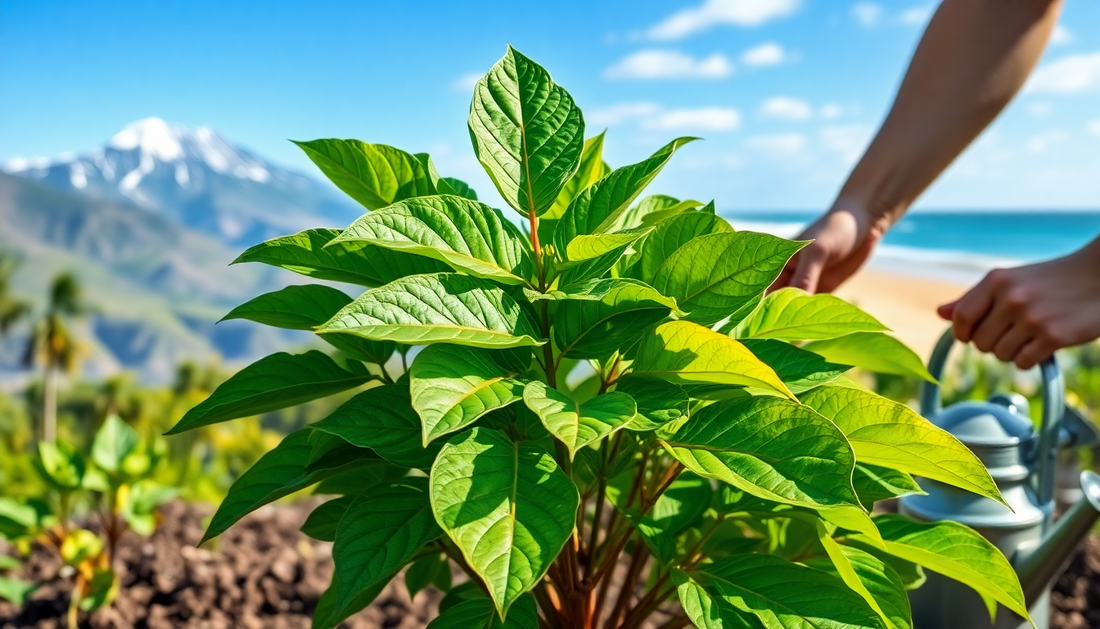
Mastering the Art of Growing Curry Leaves in Any Climate
Share
Curry leaves, a staple in Indian cuisine, are not just a flavorful addition to dishes - they also offer a wealth of health benefits. From aiding digestion to boosting immunity, these versatile leaves have long been revered in traditional medicine. However, growing curry leaves can be a challenge, especially for those living in climates that differ from their native tropical regions.
In this comprehensive guide, we'll explore the art of cultivating curry leaves in various climates, ensuring that you can enjoy the fresh, aromatic leaves no matter where you call home. Whether you're a seasoned gardener or a beginner, this blog post will provide you with the knowledge and techniques to successfully grow and maintain thriving curry leaf plants.
Understanding Curry Leaf Plants
Curry leaves, botanically known as Murraya koenigii, are native to the Indian subcontinent and thrive in tropical and subtropical regions. These evergreen shrubs or small trees can grow up to 6 meters (20 feet) tall, with dark green, glossy leaves that release a distinct, fragrant aroma when crushed or cooked.
Curry leaves are not only prized for their culinary uses but also for their medicinal properties. They are rich in antioxidants, vitamins, and minerals, making them a valuable addition to a healthy diet. Additionally, curry leaves have been used in traditional medicine to treat a variety of ailments, including digestive issues, skin problems, and even diabetes.
Factors to Consider When Growing Curry Leaves
Successful curry leaf cultivation requires a deep understanding of the plant's environmental needs. Here are the key factors to consider when growing curry leaves in different climates:
Temperature and Sunlight
Curry leaves thrive in warm, tropical climates with temperatures ranging from 20°C to 35°C (68°F to 95°F). They prefer full sun exposure, requiring at least 6 hours of direct sunlight per day. In cooler climates, curry leaves can be grown indoors or in a greenhouse to maintain the optimal temperature and light conditions.
Soil and Drainage
Curry leaves prefer well-draining, nutrient-rich soil with a slightly acidic pH between 5.5 and 7.0. The soil should be able to retain moisture without becoming waterlogged, as curry leaves are susceptible to root rot in overly wet conditions.
Humidity and Watering
Curry leaves require high humidity levels, typically between 60% to 80%. In drier climates, regular misting or using a pebble tray can help maintain the necessary humidity levels. Consistent watering is also crucial, ensuring the soil remains moist but not saturated.
Pruning and Maintenance
Regular pruning is essential for maintaining the shape and health of curry leaf plants. Prune the plants after harvesting the leaves, removing any dead or damaged foliage to encourage new growth. Fertilize the plants every 2-3 months with a balanced, slow-release fertilizer to provide the necessary nutrients.
Growing Curry Leaves in Different Climates
Now that we've covered the essential factors for growing curry leaves, let's explore the specific techniques for cultivating them in various climates:
Tropical and Subtropical Climates
In tropical and subtropical regions, curry leaves thrive with minimal effort. These plants can be grown directly in the ground, taking advantage of the warm, humid conditions. Ensure the soil is well-draining and provide full sun exposure. Regular watering and occasional pruning will keep the plants healthy and productive.
Temperate Climates
Gardeners in temperate climates, such as those with four distinct seasons, can still enjoy the benefits of homegrown curry leaves. Start by growing the plants in containers that can be moved indoors during the colder months. Provide the plants with as much sunlight as possible, either by placing them near a south-facing window or using a grow light. Maintain consistent soil moisture and humidity levels to mimic the plant's native environment.
Arid and Semi-Arid Climates
Curry leaves can also be grown in arid and semi-arid climates, but they will require more attention and care. Choose a sheltered, shaded location to protect the plants from intense sunlight and heat. Ensure the soil is well-draining and consider using a mulch to retain moisture. Increase watering frequency and mist the leaves regularly to maintain the necessary humidity levels.
Cold Climates
Cultivating curry leaves in cold climates can be a challenge, but it's not impossible. Grow the plants in containers that can be moved indoors during the winter months, providing them with as much sunlight as possible. Use a well-insulated greenhouse or a sunny, south-facing window to maintain the optimal temperature and humidity levels. Reduce watering during the colder months to prevent root rot.
Harvesting and Storing Curry Leaves
Proper harvesting and storage techniques are crucial for enjoying the full flavor and aroma of your homegrown curry leaves. Here's how to do it:
Harvesting
Curry leaves can be harvested year-round, but the best time is during the growing season, typically from spring to fall. Gently pluck the leaves, taking care not to damage the stems. Avoid harvesting more than a third of the plant's foliage at a time to ensure its continued health and productivity.
Storing
Fresh curry leaves can be stored in the refrigerator for up to a week, wrapped in a damp paper towel or placed in a resealable plastic bag. For longer-term storage, the leaves can be dried or frozen. To dry, simply spread the leaves on a baking sheet and place them in a well-ventilated area out of direct sunlight. Once dried, store the leaves in an airtight container. Alternatively, you can freeze the leaves by placing them in a single layer on a baking sheet, then transferring them to a freezer-safe bag or container.
Conclusion
Growing curry leaves at home can be a rewarding and flavorful experience, regardless of your climate. By understanding the plant's environmental needs and adapting your growing techniques accordingly, you can enjoy the fresh, aromatic leaves year-round. Whether you're a seasoned gardener or a beginner, this guide has provided you with the knowledge and tools to master the art of cultivating curry leaves in any climate. Happy gardening!
